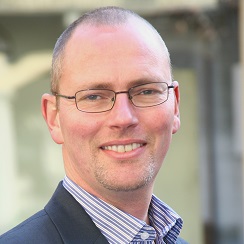News
View the latest inspiring and positive news and information about what's going on in the PM and IT world.

The benefits of PMP
The certification process of the PMP requests a time-investment and covers a lot of topics. The certification process requires dedication. However, also the benefits speak for themselves, both for the individual and the organisation. We listed the 5 main benefits:1) New skill
The PMP certification scheme includes many new learnings. It covers both technical skills as soft skills and prepares the participant to be all round Project Manager.2) Global recognition
PMP is universally recognised. PMP is global and the learned techniques and skills can be applied to all sorts of projects. PMP is industry independent.3) Commitment to your profession
To be able to write ‘PMP’ behind your name, will show your colleagues, managers and recruiters that you take your profession very seriously. It shows that you are up to date regarding the latest project management developments and that you are eager to learn and constantly develop yourself.4) Join the club
Globally there are about a million PMP certified professionals. PMI regularly organises events for these professionals to increase networking possibilities. But there are also many other online and offline communities where PM related topics are being discussed.5) Professional growth
The PMP certification increases your chances of career growth and salary increase.The five areas of PMP
The PMBOK guide offers a process-based approach to project management. It breaks down project management into 49 processes, which are then grouped under PMBOK process groups and knowledge areas. The process groups guide you in what actions to take, while the knowledge areas cover the things that you need to know as a PM. There are five different process groups: 1. Initiating Processes required to launch a new project or project phase2. Planning Processes required to define and plan the project and its execution.
3. Executing Processes required to complete project activities and tasks
4. Monitoring and controlling Processes required to check, monitor and report the project progress and performance
5. Closing Processes required to finalize a project or project phase The 10 Knowledge Areas that have been defined in project management are:. Project Integration Management This knowledge area contains the tasks that hold the overall project together and integrate it into a unified whole.
. Project Scope Management This knowledge area contains the work that is included in the project. It defines and validates the scope.
. Project Schedule Management This knowledge area contains the planning of activities and schedule (start and finish dates of tasks).
. Project Cost Management This knowledge area contains the determination of the budget and manage the costs.
. Project Quality Management This knowledge area contains plans, manages and controls the quality of the project.
. Project Resource Management This knowledge area contains the planning and managing of the team and the resource allocation.
. Project Communications Management This knowledge area contains the planning, managing and monitoring of the communication to and with stakeholders.
. Project Risk Management This knowledge area contains the risk analysis, the monitoring of risks and the risk responses.
. Project Procurement Management This knowledge area contains the planning, conducting and controlling of procurement activities.
. Project Stakeholders Management This knowledge area contains the identification of the stakeholders and managing the stakeholder engagement.
The 5 process groups and 10 knowledge areas come together in a matrix format to encompass the 49 individual processes. The processes intersect with each process group in such a way that each of the 49 processes falls under one knowledge area and one process group.Getting PMP certified
To be able to take the PMP certification exam, there are some basic requirements you must meet. PMI wants to keep the level high and therefore requires that the candidate must have worked as a PM for 4.500 or 7.500 hours (depending on previous education). It is also a must that the candidate has followed 35 hours of project management education. The PMP certification also requires lots of self study, it is generally assumed that 300 to 400 hours should suffice to be fully prepared. If you study 2-3 hours a day, this means that you can plan the exam about three months after you start studying. The PMP exam itself takes 4 hours and is made up by 200 multiple choice questions. Once you have passed the exam and are an official Project Management Professional, you will have to maintain your certification. This means that you have to earn 60 Professional Development Units (PDU) every three years. There are two types of professional PDU’s, ‘education’ and ‘giving back to the profession’. Interested to learn? Register for our FREE webinar. Xavier Heusdens explains why it is worth it to invest in the PMP certification.

What is your current job, what do you do?
I am a senior IS consultant in a digital transformation consulting company. My assignments change roughly every 1.5 / 2 years. At the moment, I work as an Agile Business Analyst with Renault management. I help and accompany them with a project that is trying to define a tool that will manage all the applications of their dealers.How did you come to have a career in project management and agility?
I have a fairly mixed background, I obtained my engineering degree in electronics and computer science at ECE Paris. However, I did not want to orient myself towards the profession of the developer as I was looking for something more functional. I started out as a project management assistant where, over my seven years of experience, I was able to acquire various skills, particularly in needs management. For two years, in the continuity of my career, I became a Business Analyst.There is not just one definition for the job of the business analyst but several realities depending on the company where he/she works. What would be your definition of a business analyst?
As you said, there is no definite definition of the profession of Business Analyst and it is not always easy for us to define ourselves. At the start, the role is rather vague. Mainly we are present where we are needed. This is my second assignment as a Business Analyst and what I mainly take away from the role of a Business Analyst is that it can be compared to a Swiss army knife. He/she must have various skills in order to help the Product Owner, the Team Leader and the Technical Team on Agile projects. You have to know how to analyze situations, know how to express a need to the customer, know how to present a solution, know how to guide the technical team, support the Product Owner. The Business Analyst is truly multitasking. It is also my role to raise an alert if user stories are poorly written, if they are missing or if the Product Owner is overwhelmed. I sometimes take the follow-up and write them for him/her. Clearly, my role is to work in support of the Product Owner, while being close to the technical team and the team leader to know their needs in terms of technical limitations and have a 360 ° vision on each project. In my view, the Business Analyst must become familiar with the organisation of work resulting from the internal and external constraints of the company. He/she can acquire this organisational knowledge by observing all the key contributors to the project. This in order to take ownership of the way in which the user operates within the framework of his work environment and to understand the links and interactions between the roles and services of the organisation. Business processes are of course at the centre of the analysis, but we must also list all the elements that might impact the project. I would even add that the profession of a Business Analyst is open, it is not a fixed profession. As the perimeter is not always clear or well defined, it is an opportunity for the Business Analyst, to reinvent his profession and to redefine his perimeter, depending on needs, skills, desires. The business analyst has the possibility of always doing more to participate, to better help the realization of the project and to discover new things. That’s the whole point of the job.What are the issues/challenges that business analysts can encounter?
The main challenge is precisely this completeness. You can be a good business analyst, but it is very difficult to be a complete Business Analyst. There are always gaps or weak points in certain areas. For example, in all projects, I will be expected to know how to do SQL and queries, which is not necessarily my daily life. It is at this very moment that it is important to strike quickly, when speaking to me in technical language, to update myself quickly to at least understand the issues that are addressed to me. As the Business Analyst is expected on all fronts, responsiveness makes the difference and allows not to be excellent but at least effective on all fronts.What do you think is key to being an excellent business analyst?
You have to be humble, learn quickly and not be afraid to say you don't know the answer. It might have been one of my weak points at the beginning but today it has become my strength. We always work in very competitive projects, where there are high expectations of the consultant (Business Analyst). As a consultant, It can be scary to say that we do not always know the answer. However, if we do admit this, it will help to identify the issue and get closer to the right people that will be able to teach us. The second point that joins the first is listening and learning. There is always a solution to a challenge, but you have to understand from the outset how the project team works. Who are the people who can help me learn and who are the people I have to help?What about Agile and remote work, how have you handled the COVID situation?
I see it as a very interesting experience. To me, it proves that although human contact is pleasant, we do not especially need to be physically present in the same space to work, exchange and learn. We continued to have our meetings and ceremonies (daily meeting, sprint review) remotely using the Microsoft Teams collaborative communication application. This app also offers an interactive whiteboard on which it is possible to recreate post-its, draw, write notes or even create complex diagrams. We have not encountered any particular communication or other problems. It really depends on the projects, but since our technical team is international, we were already used to working remotely. The team on-site has adapted very well by increasing the number of mini-vision during the day.What are some concepts you would like to focus on in the near future to develop yourself as a professional?
In the near future, I would like to focus on project management. As a business analyst, we see and hear a lot of things regarding the project. I would like to have the position that goes with this experience acquired and which allows us to look at the project as a whole. I am also very interested in developing my skills in business strategy. Business strategy requires good analytical skills, in order to help either companies, managers or directly large projects to know how to define themselves, to embark on a market.Holyvia Joseph
 Holyvia is a senior consultant for a digital transformation consulting company and has been working as an Agile Business Analyst for large international groups for several years.
Holyvia is a senior consultant for a digital transformation consulting company and has been working as an Agile Business Analyst for large international groups for several years.
De Facto Standard Documents in many Change Methods
In a lot of change management methods, especially the more lifecycle- and process-focused ones, like MSP (5.) and Agile Change Management (1.), techniques are proposed to capture what needs to be changed, what the reason for the change is and how the change is linked to that reason. These techniques usually focus on putting something on paper and typically result in one of these types of documents:- A vision A short, high level, motivating description of a desired future state, which explains where we want to go and the reasons why, and is used for communication purposes.
- A blueprint A more detailed “to be” description of this desired future state, which can be a POTI blueprint, a Target Operating Model, a Business Model, 7S model, Copafith description etc., and is used to be compared with the current “as is” state, to identify what changes are needed in more detail.
- Requirements Descriptions in one form or another for outputs or ‘deliverables’ needed to be able to implement the change. This can be in the form of epics, user stories, functional requirements, product descriptions, etc.
- A benefits map A model, map or visualization that explains the link between the end goal of the change, the more detailed changes and the outputs needed for that change. This can be a benefits map, a benefits dependency diagram, an objectives tree, a goal diagram, an Ishikawa diagram, etc.
Typical Uses of these documents: Governance, Quality, Control
A vision, blueprint, benefits map and requirements are often only used for governance reasons. Approved requirements mean that we can start working on them. An approved blueprint means management has agreed and given the go-ahead. However, this does not mean that they are motivating the people that must change the way they are working. These documents, if prepared well, inherently raise the quality of preparations of a change initiative. A coherent blueprint guarantees that we have not forgotten anything, a good vision statement helps to communicate and creating a common understanding of the change. Well-written requirements help in realizing the right outputs and well-defined benefits help in evaluating the success of a change. Still, for raising engagement in the change, technical quality alone does not suffice. Monitoring and controlling progress are other important uses of these documents, but when used solely for that purpose, they might actually be countering our effort to raise engagement. A vision and a benefits map should not be used only for governance, for raising the quality or for monitoring and control, but also for raising engagement.Raising Change Engagement With a Vision and Benefits Map
For raising engagement with these documents, we must look at Dan Pink’s 3 areas for increased performance and satisfaction, autonomy, mastery and purpose:- Autonomy — Our desire to be self-directed. It increases engagement over compliance.
- Mastery — The urge to get better skills.
- Purpose — The desire to do something that has meaning and is important. Businesses that only focus on profits without valuing purpose will end up with poor customer service and unhappy employees.
Limitations
‘To participate in… as much as possible’ may sound vague. There are two situations I think are worth talking about that limit the participative approach:- Dan Pink’s work on autonomy, mastery and purpose is especially relevant for people doing ‘knowledge work’. He said that as soon as more than “rudimentary cognitive skills are required” (3), these three factors become more and more important in motivating people. With people doing purely physical work the three factors are less relevant. In practice, however, knowledge work is becoming increasingly important in every sector of business, and so are Dan Pink’s three factors for motivation.
- Emergency change: “change or die” situations require speed and limit how participatory the change initiative can be. Of course, if an organization is in such a situation, the purpose of the change as a whole will be clearer as well. However, that does not mean that people understand how what is asked of them personally, is linked to this bigger purpose. Especially if they are asked to suffer the (sometimes dire) consequences of an emergency change. Low engagement and lower return on investment of the change are the logical results, which is only one of the reasons why management should try to avoid such an emergency change.
Conclusion
To summarize, to raise engagement for non-emergency changes that involve rudimentary cognitive skills:- Ensure the purpose of the change as a whole is shared and understood, and also link the personal change activities to this purpose, using a clear vision statement and benefits map.
- Ensure benefits are SMART, specific, measurable and timebound, surely, but also attainable, relevant and ambitious (enough) on a personal level; and create a safe environment.
- Allow the people that have to change their way of working, to participate in the creation of the vision statement, blueprint, benefits map and requirements as much as possible.
More information
If you are interested in managing change, how to prepare a vision, a blueprint benefits map or in the transformational change method MSP, visit our MSP and Change Management pages and learn how these courses can help you improve the management of change! MSP® is a registered trademark of AXELOS Limited. References 1. Franklin, M. (2014), Agile Change Management, Kogan Page Ltd, London, UK 2. Kotter, J.P. (2007), Leading Change, Why Transformation Efforts Fail, HBR, Jan. 2007, HBSPC, Brighton, USA 3. Pink, D., (2009), The Surprising Truth About What Motivates Us, Riverhead Books, New York, USA 4. Smith, R. et al (ed.), (2014), The Effective Change Manager’s Handbook, Kogan Page Ltd, London, UK 5. Sowden, R. et al, Crown Copyright, (2011), Managing Successful Programmes, TSO, Norwich, UK
Niels van Bemmelen
Niels has 20 years of experience in projects and programmes for organisational change. He has been involved in complete business change projects in challenging international environments. As a project manager, business analyst and in assurance roles Niels has worked in projects in finance, public sector, tourism and education. He is a multilingual trainer for AgilePM, PRINCE2, MSP, MoP, P3O and PRINCE2 Agile and teaches in English, Dutch and Italian.
- PRINCE2 Foundation (or higher) - this only applies to certificates obtained after 1 January 2009
- Project Management Professional (PMP)*
- Certified Associate in Project Management (CAPM)*
- IPMA Level A® (Certified Projects Director)
- IPMA Level B® (Certified Senior Project Manager)
- IPMA Level C® (Certified Project Manager)
- IPMA Level D® (Certified Project Management Associate).
PRINCE2 Practitioner Exam Target
- Project Managers and aspiring Project Managers
- Project Board members (e.g. Senior Responsible Owners)
- Team Managers (e.g. Product Delivery Managers)
- Project Assurance (e.g. Business Change Analysts)
- Project Support (e.g. Project and Programme Office personnel)
- Operational line managers/staff.
PRINCE2 Practitioner Exam Format
- Language: English (please add the relevant languages for your markets)
- Duration: 150 minutes
- 25% extra time if you take the exam in a language that is not your native language
- Materials: The Managing Successful Projects with PRINCE2
- This is an ‘open book’ exam. The Official PRINCE2 Manual, 2017 edition, should be used (and you can make notes inside the book), but no other material is allowed.
- Questions: 68
- All 68 questions are Objective Test Questions (OTQs)
- You should read the ‘Project Scenario’ which gives background information about the project that the questions apply
- Pass Mark: 38 marks or above (there is no negative marking)
- Level of Thinking: Bloom’s levels 3 & 4
- Bloom’s level 3 questions: The individual needs to apply his/her knowledge to a situation.
- Bloom’s level 4 questions: The Individual needs to analyze the information provided and the reason whether a course of action is effective/appropriate.
- Exam Format: Online or Paper
- Certificate Format: Online
- The online certificate is usually included in the exam fee, you could ask for a paper certificate to the Exam institute after your exam
PRINCE2 Practitioner Exam Questions examples
The questions are all ‘multiple-choice’. There is a short description of a situation, and then a question. For the ‘classic’ questions (1 mark), you have a question and four options (A, B, C, D). For the ‘matching’ questions (3 marks) you have 3 pieces of information and you have to choose an answer for each from a list of 5 or 6 options.Example ‘classic’ OTQ
At the end of stage 3, the risk that production costs could exceed the sales for the software is estimated to be high, as all of the cost tolerance for stage 3 has been used. As a result, the project manager has defined tight cost and time tolerances for the work packages to produce the 'artwork' and develop the software during stage 4. Which principle is being applied, and why?- 'Manage by exception', because the level of control retained by the project manager must match the tolerance available.
- 'Manage by exception', because action should be taken so that production costs do not exceed the album sales.
- 'Manage by stages', because cost tolerance should be set for each work package in a stage.
- 'Manage by stages', because team managers should be given authority before work can commence.
Example ‘matching’ OTQ
Here are three statements from the business case for the Music Album Project. Under which heading of the business case (A-F) should the statements be recorded? Choose only one for each statement. Each heading can be used once, more than once, or not at all.- It has been decided to invest in a new singer.
- We need to keep up with our competitors who have seen an increase in sales from the new singers they are signing with.
- Current customers may not buy from us if they see a change in the style of music we sell. This may cause a decrease in overall sales.
PRINCE2 Practitioner Objectives
This exam has been developed to assess whether the candidate can apply and tailor the PRINCE2 project management method. As a candidate you need to demonstrate the achievement of these learning outcomes:- Apply the PRINCE2 principles in the context
- Apply and tailor relevant aspects of PRINCE2 themes in the context
- Apply (and tailor) relevant aspects of PRINCE2 processes in the context
PRINCE2 Practitioner Certificate
The validity of PRINCE2 2017 Practitioner certificate is 3 year. This certificate will expire unless the candidate:- Retake the PRINCE2 2017 Practitioner Exam before the expiry date.
- Maintain the certification through CPD points and a digital badge available on the Axelos website.

What are output, outcome and benefits?
OUTPUT
Deliverable, also translated as results. Output can be a product and/or service that introduces something new (a change).OUTCOME
The change introduced by the output leads to an outcome, a final result, which offers direct benefits.BENEFITS
The real “why” of the project. Benefits are measurable improvements resulting from the final result or outcome. What are the characteristics of these three elements and what is their relationship?- The outputs are easy to measure; it is easy to see whether the output has been created/achieved or not.
- Outcomes are more difficult to measure and they interest the user. To measure them, you can, for example, interview those who use the product and/or service.
- The benefits are the hardest part and are difficult to measure. They are of particular interest to the people who have to decide to carry out the project. To measure them you can use collected data, statistics or surveys.

Relationship between outputs, outcomes, benefits in a project
According to The PM² Methodology Guide v3.0, all parties involved in the project must be able to identify the outputs, outcomes and benefits of a project. Without understanding, project participants can lose sight of the original goal and produce deliverables that have little (or no) value for the organisation. Since the project team finishes its work with the delivery of the output, it is the Project Manager who must ensure that they are implemented. In order to do so, he/she must create the vision from the beginning of the project and share this vision with the project team. While it is true that often the final results and benefits are realized only after the closure of the project, it is necessary to avoid reaching the conclusion of the project without the involvement and a clear vision for all team members. For example, the output of a project can be the development of new software that keeps user requests for a particular line of products. The outcomes can be service improvement, greater accuracy of the data collected and better user satisfaction. The benefits could be a 20% increase in product sales and 25% revenue growth.Best practices for realizing the benefits of a project:
- Establish project KPIs: measuring is key. Also, make sure you create the right structure to measure. The KPIs help the whole team to focus on common goals and ensure the alignment of all the resources involved.
- Involve the project team. If you are the Project Manager focused on the final results and benefits expected by the organisation, you will inspire other team members. It is important to always have in mind the reason for the project. If you are a Team Member, question yourself and question your Project Manager if you are not clear about the vision of the project.
- Clearly written in the Business Case what the planned (and therefore expected) benefits are. Review estimates regularly, especially if real benefits are difficult to measure.
- Project management methods can certainly offer you a useful tool to check performance and have tools to improve it.

What's your current job title and what does that mean in practice?
My current job title is 'Team Leader Pool Project Leaders'. In practice, this means that I am responsible for a team of project leaders, who are executing and leading the transversal transformation projects in our organisation. The team is also responsible for the project methodology (“PMFin”, PRINCE2 based) within the organisation. This means that we train all the project leaders and that we are responsible for all the training material. My team mainly focuses on projects that impact all of our departments. These projects help us accomplish our four strategic ambitions:- Tailored: personalized and accessible services
- Cooperation: valuable interaction based on mutual trust
- Smart: a data-driven, innovative organisation
- Performance: a flexible organisation that creates pleasant working conditions
How did you end up in the world of Project, Program and Portfolio management?
I discovered the world of project management at the Public Service of Health. I started there in 2010 as a project leader. Three years – and a lot of projects and experience later – I switched to the Public Service of Finance where I now work for 8 years already. After several projects, I also led the programme 'Knowledge Management' and became a team leader.What's the biggest issue you see in your network at the moment regarding PM?
The biggest issue in our network is the different skill levels of the PMO’s and project leaders. We have some very experienced PMO’s and project leaders, but also a lot of juniors who are just starting. A job as a project leader is extremely demanding. This means that you always have to deal with some turnover.What's your advice on how to solve/face the above-mentioned issue?
Different skill levels mean that you cannot work with a “one size fits all” approach. We already offer a wide range of training possibilities and workshops today: basic project management, planning, risk management, benefits management, resource management, communication and change management, … In the future, we will evolve more towards individual coaching to work as customized as possible. Recent survey results show that project leaders prefer to follow e-learning in combination with coaching rather than following classes in groups or workshops. We strive to keep our training up to date every year and to adjust them depending on their needs.What are the specific challenges that you face within PM in the public sector?
I think it’s more difficult to launch innovative and creative projects in the public sector because our margin of acceptable failure is a lot smaller than in the private sector. In the private sector, you’re even obligated to take the risk of investing in innovation to stay relevant in the sector. The investments that are made in the public sector have to be immediately socially relevant. The benefits of an innovative project often only become visible after a couple of years. That’s the reason why it’s not as easy to invest “taxpayer money” in projects that don’t have an immediate return on investment.What kind of advice would you give to the public sector, in general, to prepare for the future coming years?
Don’t run before you can walk. There are a lot of interesting steps to take in the world of Project Management (resource management, benefits management, tooling, …), but it’s important to adapt those choices to the level of maturity of your organisation and the teams. It makes no sense to try to implement things where the people or the process aren’t ready for.What are three things you’ve told yourself that you would like to learn in the near future to develop yourself and your team?
The last few years we mainly focused on “hard skills”: Project Management, resource management, benefits management, … In the near future I would like to focus on 'soft skills': brainstorming techniques, creativity, collaboration in a team, solution-oriented thinking). The world of Project Management is often a 'hard' world where people like to focus on the technical part of the job. A pity, because what would a project leader be without being able to inspire his or her team, without facilitating, coaching, influencing, motivation, negotiation and trust-building skills?Shana Coenen
Team Leader Pool Project Leaders
 Shana Coenen has been working in a project-, program- and change management since 2009. She works at the Federal Public Service Finance where she is responsible for the pool of transversal project managers. Those project managers execute the transformation projects for the FPS. She is passionate about organizational development and never stops exploring opportunities to keep evolving the organization and the people who are part of it.
Shana Coenen has been working in a project-, program- and change management since 2009. She works at the Federal Public Service Finance where she is responsible for the pool of transversal project managers. Those project managers execute the transformation projects for the FPS. She is passionate about organizational development and never stops exploring opportunities to keep evolving the organization and the people who are part of it.






